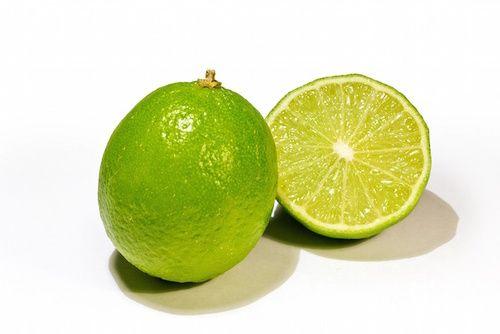He files, rich in vitamin C, it is a powerful antioxidant useful for the immune system. Often it is confused with lemon or sometimes regarded as the English translation of the term "lemon". In reality it is not the same citrus, even though it belongs to the same family. Let's find out better
> 2. Properties and benefits of lime
> 3. Calories and nutritional values from the lime
> 4. Ally of

Description of the plant
The limetta, also known commercially as lime and with the scientific name Citrus aurantifolia, it is an irregularly shaped sapling of 4-5 meters in height of the Rutaceae family.
Unlike all other citrus, which are subtropical plants, lime prefers the climate of the tropics. That is why it is the only almost unknown plant of its kind in the Mediterranean Sea (except in Egypt).
Its fruit, still scarcely used, is often confused with lemon or sometimes considered as the English translation of the term "lemon". In reality it is not the same citrus, although belonging to the same family, it is assumed that it is a hybrid between cedar and lemon but not all experts agree on its origin.
The fruits are small, slightly oval, mostly green or yellowish-green; the pulp is very juicy and practically seedless, very fragrant and not very sour (sometimes the acidity does not even reach 0,1%), the skin is thin and rich in essential oils.
Properties and benefits of lime
The nutritional values of lime and its therapeutic properties are practically very similar to those of lemon.
Like the latter, the lime contains a lot of vitamin C (which has antioxidant power and boosts the immune system), B vitamins (useful for the nervous system), mineral salts (especially the potassium and magnesium), folic acid, flavonoids, mucilages and organic acids.
Calories and nutritional values of lime
For 100g of limes the caloric intake is 14 Kcal due to the presence of:
- water (about 90g),
- carbohydrates (8g),
- proteins (less than 0,5g),
- fiber (less than 0,5g).
Find out what are rare citrus fruits like lime

Lime, ally of
It is a natural gastric antacid (contrary to what one might think, given its flavor, thanks to the organic acids it contains), it promotes digestion and has remarkable tonic, refreshing, antidiarrheal, diuretic, antiseptic and bactericidal properties. Let's see them specifically:
- skin care. It keeps it shiny and healthy whether we eat it or apply its juice directly to the skin; it protects it from infections and not to be underestimated is the deodorant effect due to the presence of a large amount of vitamin C, flavonoids, antibiotics and disinfectants;
- aid for digestion. The smell of lime, due to flavonoids, leads to greater salivation by stimulating the digestive system, increasing the secretion of gastric juices, bile and acids (the citric acid contained in the fruit helps the stomach acids to digest what we have eaten) and also by stimulating the peristaltic movement;
- relief in case of constipation. The acidity present in the lime purifies the excretory system restoring the balance;
- cholesterol reduction. The intake of lime with meals is useful in lowering the level of cholesterol in the blood;
- sight support. Its antioxidant properties, due to the large presence of vitamin C, lead to positive effects in the prevention of macular degeneration and aging of the eyes. Furthermore, flavonoids help protect them from infections;
- energetic. Due to its high potassium content it is ideal for counteracting sudden drops in tone;
- help in urinary disorders. Citric acid has a solvent power on kidney stones, facilitating their dissolution and preventing their formation. In addition, the high potassium content is very effective in purification and its disinfectant properties help treat infections of the urinary system;
- relief in respiratory disorders. The peel of a lime, if grated and if you inhale its perfume, gives immediate relief in case of respiratory problems.
Also discover the properties of lime essential oil
Curiosities about lime
The leaves and peel of this fruit contain aromatic essences and essential oils which are used in perfumery, herbal medicine and in the detergent industry such as body oils, hair oils, toothpastes, soaps, disinfectants, mouthwashes, deodorants and many other products.
These same substances, which give limes the scent we appreciate, make it a lot unpleasant for mosquitoes. Then use the lime extract to put on the skin to ward off these annoying insects!
With a sweet and slightly sour taste, it is rarely consumed as a fruit, rather it is used in preparation of soft drinks, cocktails (Mojito, Caipirinha, Caipiroska), as an ingredient in recipes, toppings or as a condiment for fruit salads and seafood, sometimes also associated with curry.
Lime among the citrus fruits of March: discover the others
3 recipes with lime


























